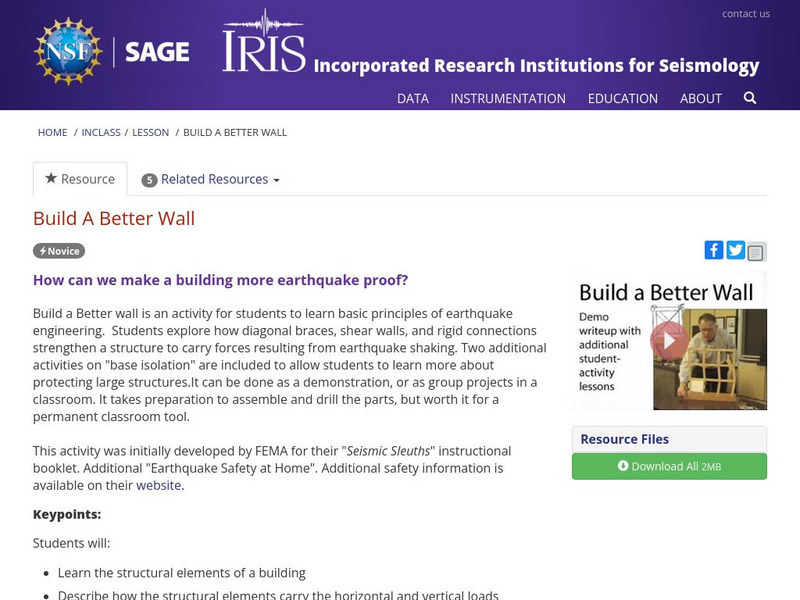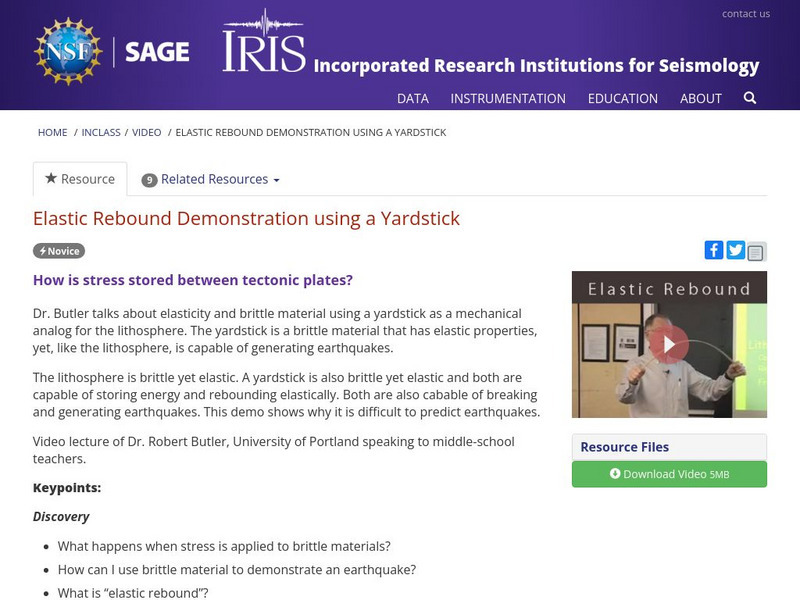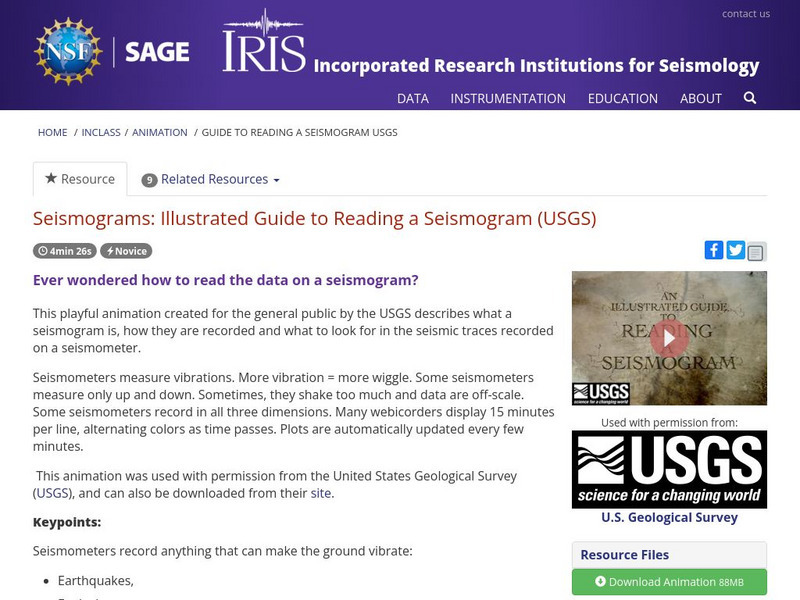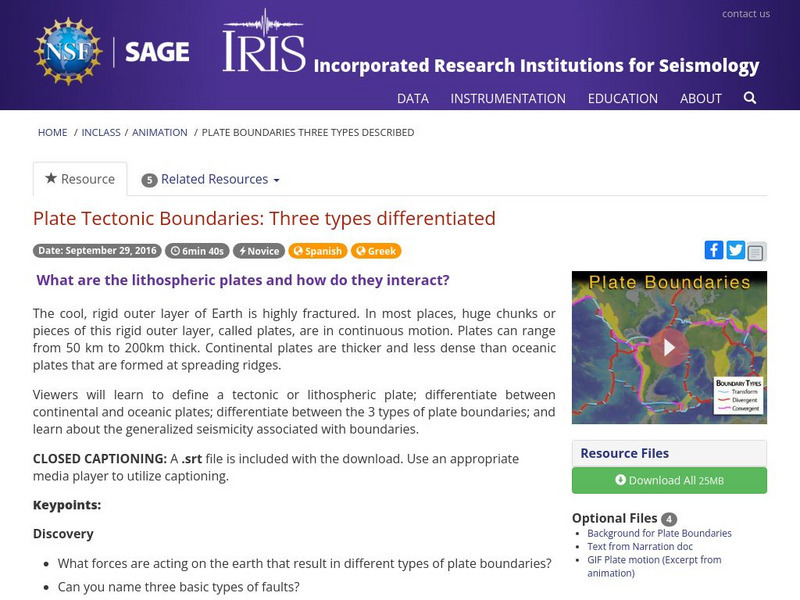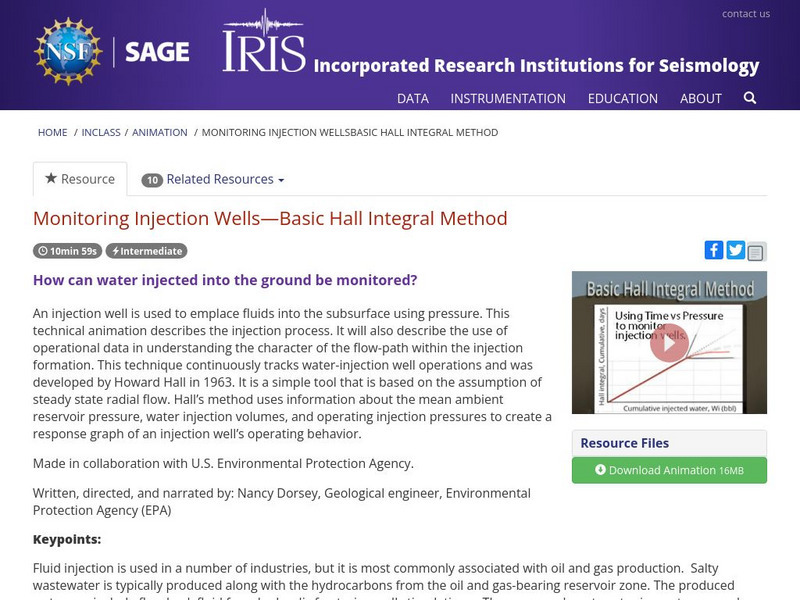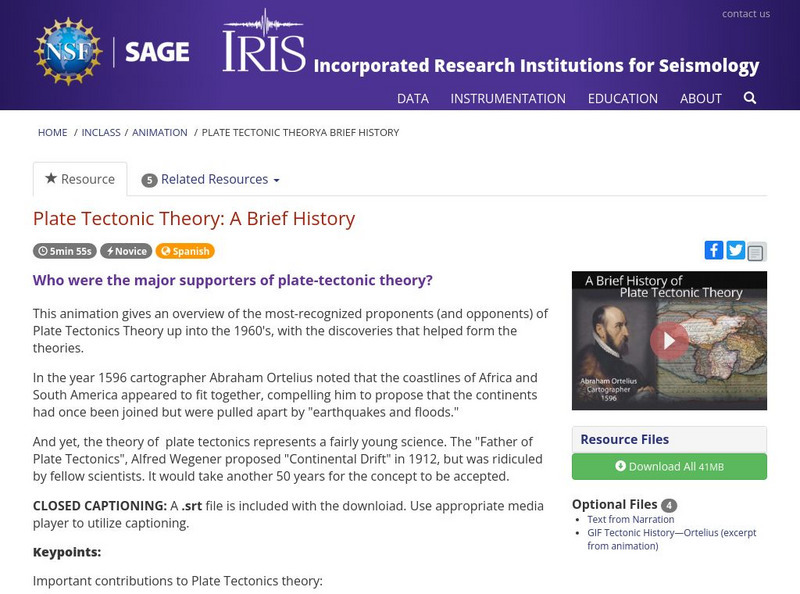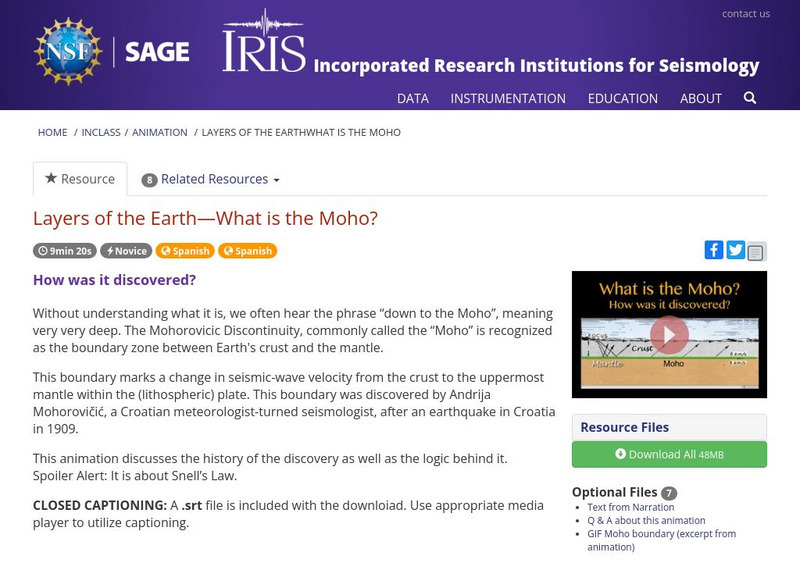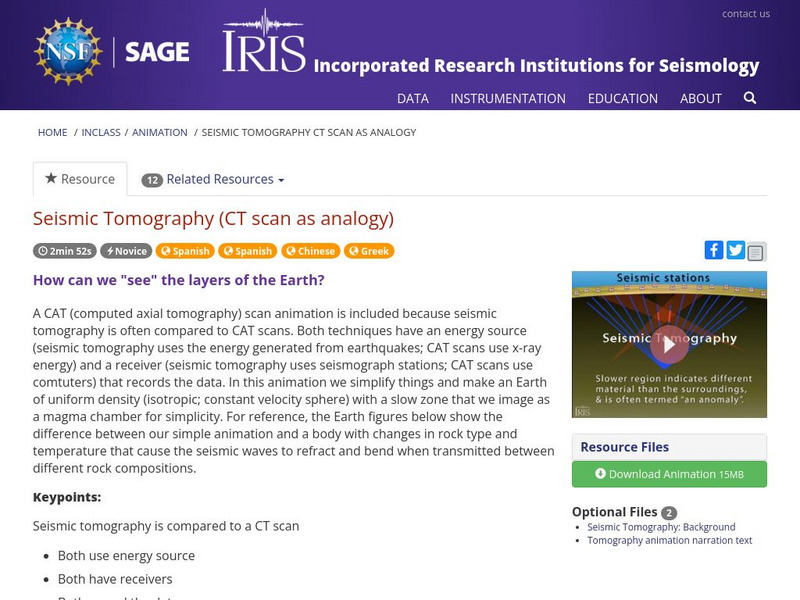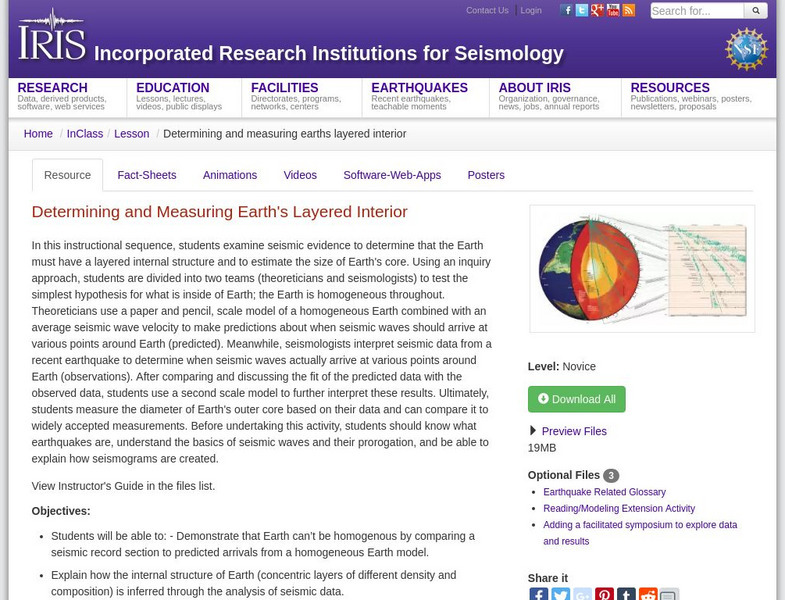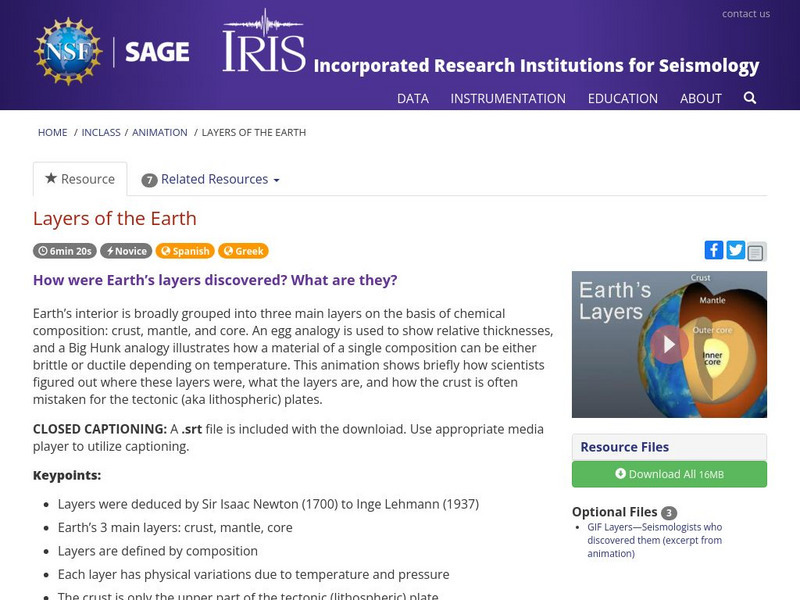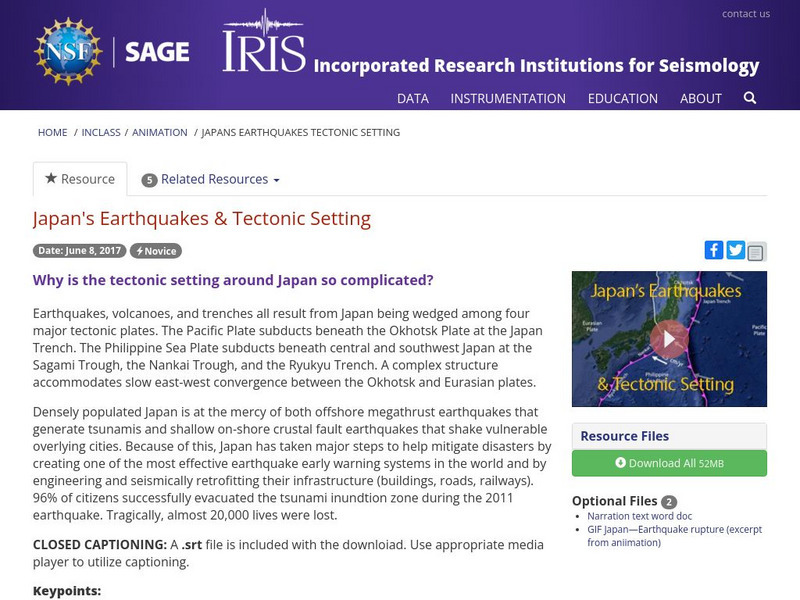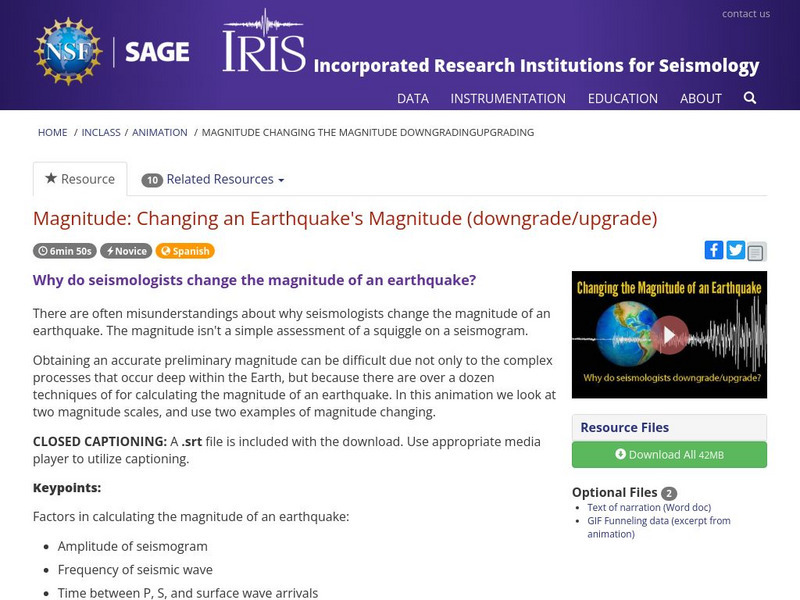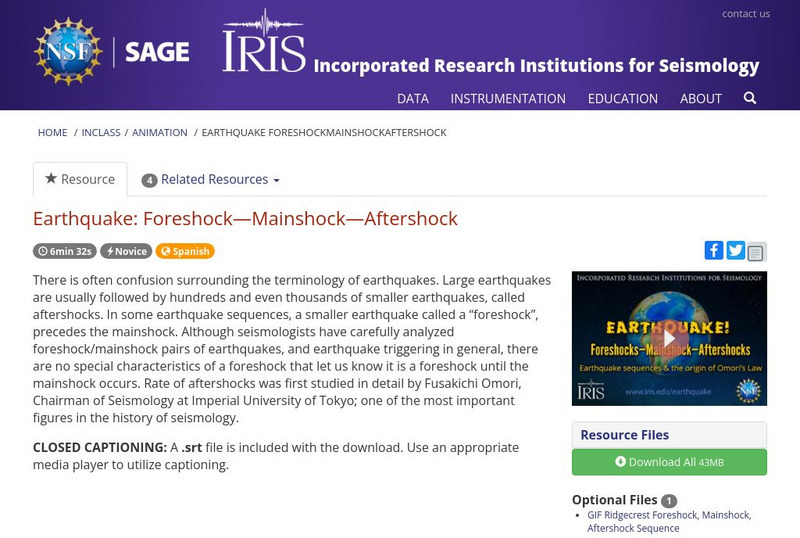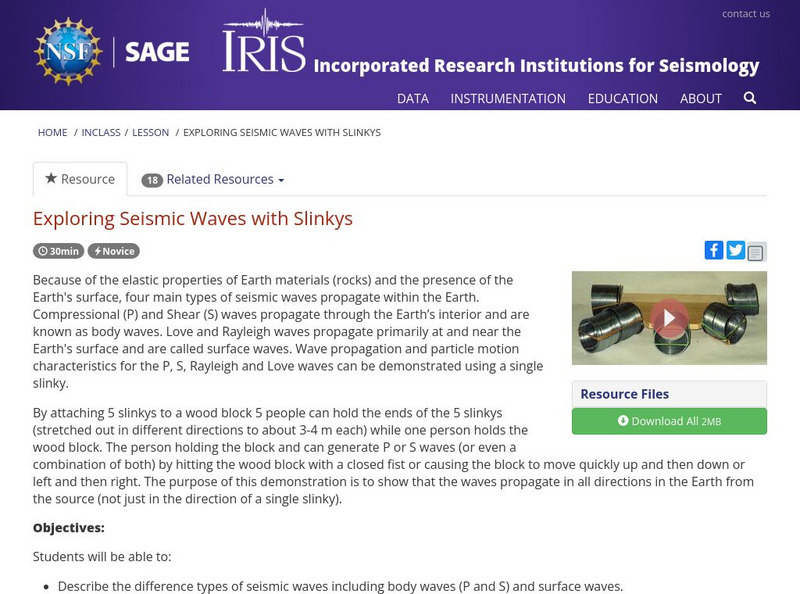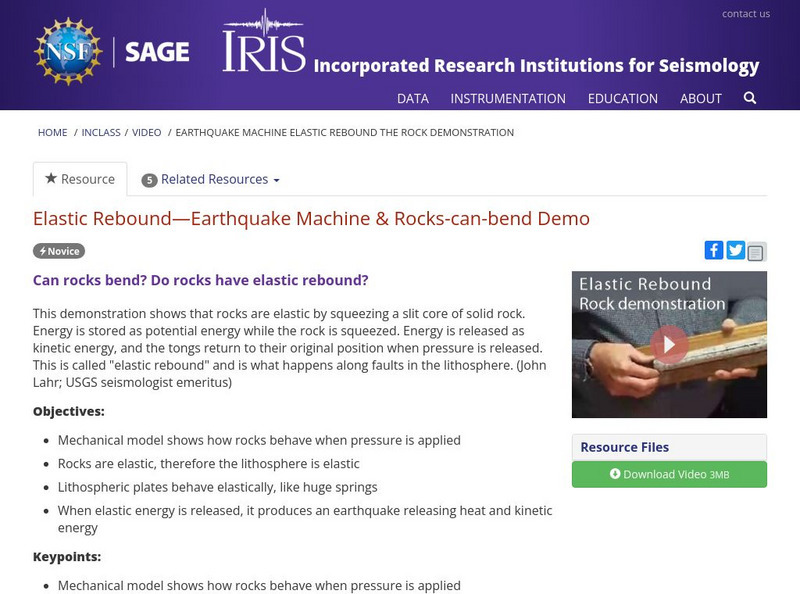Hi, what do you want to do?
Incorporated Research Institutions for Seismology
Iris: Build a Better Wall for Earthquakes
This activity helps students learn how diagonal braces, shear walls, and rigid connections strengthen a structure to carry forces resulting from earthquake shaking. [5:54]
Incorporated Research Institutions for Seismology
Iris: Elastic Rebound Demonstration Using a Yardstick
See a scientist talk about elasticity and brittle material using a yardstick as a mechanical analog for the lithosphere, and to show how stress is stored in-between tectonic plates. [1:57]
Incorporated Research Institutions for Seismology
Iris: Seismograms: Illustrated Guide to Reading a Seismogram (Usgs)
This playful animation describes what a seismogram is, how they are recorded and what to look for in the seismic traces recorded on a seismometer. [4:26]
Incorporated Research Institutions for Seismology
Iris: Introduction to Marine Seismic Processing
This presentation and associated activity introduces students to both the concepts of processing marine seismic data as well a providing an introduction to PROMAX software.
Incorporated Research Institutions for Seismology
Iris: Plate Boundaries: Three Types Differentiated
Learn to define a tectonic or lithospheric plate; differentiate between continental and oceanic plates; differentiate between the 3 types of plate boundaries; and learn about the generalized seismicity associated with boundaries. [6:58]
Incorporated Research Institutions for Seismology
Iris: Pacific Northwest Volcanism 55 Million Years to Present
Using map view in concert with cross sections, this animation steps the viewer through both volcanic and simplified tetonic processes. [5:11]
Incorporated Research Institutions for Seismology
Iris: Monitoring Injection Wells Basic Hall Integral Method
An injection well is used to emplace fluids into the subsurface using pressure. This technical animation describes the injection process. [10:59]
Incorporated Research Institutions for Seismology
Iris: Basics of Seismic Interpretation
A video lecture and accompanying practice exercises that allow students to apply the geologic framework to seismic exploration and prospecting.
Incorporated Research Institutions for Seismology
Iris: Earthquake Machine 2 Developing Arguments About Earthquake Occurrence
This activity uses the Earthquake Machine, a mechanical model that illustrates the earthquake cycle, as a tool to investigate the behavior of fault systems.
Incorporated Research Institutions for Seismology
Iris: Plate Tectonic Theory: A Brief History
This animation gives an overview of the most-recognized proponents (and opponents) of Plate Tectonics Theory up into the 1960's, with the discoveries that helped form the theories. [5:56]
Incorporated Research Institutions for Seismology
Iris: Layers of the Earth What Is the Moho?
This animation discusses the history of the discovery of the Mohorovicic Discontinuity, as well as the logic behind it. Spoiler Alert: It is about Snell's Law. [9:22]
Incorporated Research Institutions for Seismology
Iris: Seismic Tomography (Ct Scan as Analogy)
How can we see the layers of the Earth? A CAT (computed axial tomography) scan animation is included because seismic tomography is often compared to CAT scans. [2:34]
Incorporated Research Institutions for Seismology
Iris: Determining and Measuring Earth's Layered Interior
In this instructional sequence, students examine seismic evidence to determine that the Earth must have a layered internal structure and to estimate the size of Earth's core.
Incorporated Research Institutions for Seismology
Iris: Layers of the Earth
Earth's interior is broadly grouped into three main layers on the basis of chemical composition: crust, mantle, and core. An egg analogy is used to show relative thicknesses, and a Big Hunk analogy illustrates how a material of a single...
Incorporated Research Institutions for Seismology
Iris: Japan's Earthquakes & Tectonic Setting
This animation addresses regional and local tectonics, earthquake occurrences and historic earthquakes, crustal fault earthquakes (Kobe, 1995), megathrust earthquakes (Tohoku-Oki, 2011), and tsunamis. [10:04]
Incorporated Research Institutions for Seismology
Iris: Seismic Slinky: Modeling P and S Waves in the Classroom
A middle school science teacher demonstrates how a slinky is a good analogy for P & S seismic waves. [5:13]
Incorporated Research Institutions for Seismology
Iris: Magnitude: Changing an Earthquake's Magnitude (Downgrade/upgrade)
In this animation take a look at two magnitude scales, and use two examples of magnitude changing. [6:54]
Incorporated Research Institutions for Seismology
Iris: Earthquake: Foreshock Mainshock Aftershock
Learn how foreshocks and aftershocks are related to the main shocks of earthquakes. [6:32]
Incorporated Research Institutions for Seismology
Iris: Exploring Seismic Waves With Slinkys
This demonstration shows that seismic waves propagate in all directions in the Earth from the source (not just in the direction of a single slinky). [5:13]
Incorporated Research Institutions for Seismology
Iris: Earthquake Machine: Demonstration of the 2 Block Model
See how to model differential friction along a fault. [2:30]
Incorporated Research Institutions for Seismology
Iris: Earthquake Machine: Elastic Rebound & the Rock Demonstration
This demonstration shows that rocks are elastic by squeezing a slit core of solid rock. Energy is stored as potential energy while the rock is squeezed. [1:22]
Incorporated Research Institutions for Seismology
Iris: Earthquake Machine: Parts, Construction, & Extension
See a demonstration of an earthquake slip-stick behavior in the classroom. [6:22]
Incorporated Research Institutions for Seismology
Iris: Fault: Oblique Right Lateral Thrust
Find out what causes a fault to move in oblique direction. [0:21]
Incorporated Research Institutions for Seismology
Iris: Human Wave Demo Modeling P & S Waves in Solids & Liquids
This demonstration explores two of the four (P and S waves) main ways energy propagates from the hypocenter of an earthquake. [8:27]





